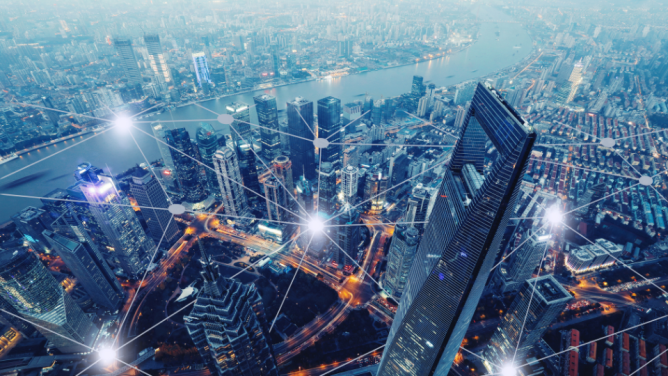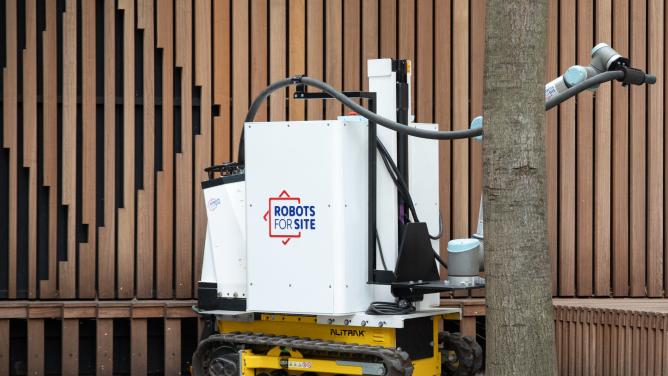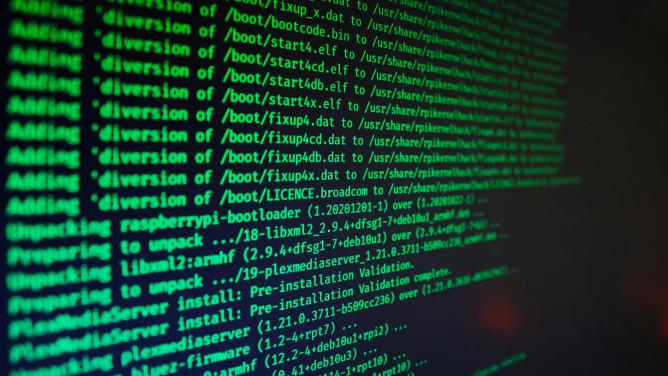
The metaverse: construction sector converting to digital content?
The current concept of the metaverse remains largely cloudy, giving rise to as many definitions as there are experts on the subject. Perhaps the most interesting definition for the construction and infrastructure sector – or even the energy sector – is that of a “new digital territory”. It raises the question concerning the structure of digital living and working spaces, mobilising both new technical constraints and more traditional expertise. As Roblox founder Niel Riemer explains, the metaverse’s success is directly tied to user-generated content. Without activity, without creators, the platforms remain powerless – even Meta recognised this when it admitted that its Horizon Worlds was desperately empty. This is where architects come into play. For them, the metaverse is a playground with limitless possibilities. It’s the opportunity to explore the idea of ”virtual public space“, to give free rein to a creativity often restricted by the heavy constraints of reality, the opportunity to revive places that no longer exist, and the opportunity to test real solutions in a virtual sandbox.
Selected projects
Liberland by Zaha Hadid Architects: Architecture studio Zaha Hadid Architects is very active on the matter, having recently unveiled Liberland, the “digital twin” of a micronation claimed by the Czech politician Vít Jedlicka. The place is designed as a “networking hub” for all activity related to crypto-currencies and accessible to avatars. Back in 2021, Zaha Hadid Architects already stood out from the crowd with NFTism, a virtual art gallery created as part of Art Basel.
Nakagin Capsule Tower by Gluon: The 3D Digital Archive project proposed by Gluon aims to preserve buildings in the metaverse that have been demolished or are about to be demolished. This is the case with the famous Nakagin Capsule Tower which was torn down in 2022 and can now be discovered in AR or VR.

The Row by Everyrealm: Designed as a digital real estate complex reserved for select members, The Row offers spaces designed by renown artists such as Daniel Arsham, Alexis Christodoulou and Misha Kahn. Basically, it’s luxury real estate reinvented in the metaverse.

Metaverse real estate: just a mirage?
In 2020, artist Krista Kim sold the first NFT (non-fungible token) house for $500,000, branded the Mars House. The euphoria around the concept of the metaverse then caused a sort of digital land rush. The record for the most expensive land sale in the metaverse was when real estate firm Realm Republic purchased $4.3 million worth of land on The Sandbox. Today, the various platforms have not (yet?) found their audience and prices have collapsed (-97% between November 2021 and June 2022 on The Sandbox and Decentraland). This hyper-volatility can be attributed to a whole range of factors:
- Metaverses are still in their early stages and have not won over the general public.
- The digital space is almost infinite, so it’s harder to create something rare there.
- If a platform ceases to exist, so too do the goods located there, which constitutes a significant risk!
Mars House (2020) from Krista Kim on Vimeo.
New trades for the construction industry?
Long decried for its inertia, the construction industry has recently undergone a major digital transformation. The BIM sector in particular has given rise to a whole new range of professions (BIM manager, modeler and coordinator, to name a few). The metaverse’s promises are an extension of this transformation, and some professionals are seizing the opportunity. Take Alexandre Ogar, who positions himself as “architect and designer of virtual buildings for the most popular metaverses such as Somnium, Cryptovoxel, The Sandbox and Decentraland”. Apart from construction, the metaverse is getting in on the action when it comes to infrastructure and city management methods, causing new jobs to emerge. With Metaverse Seoul, the Korean capital is a pioneer. The platform is designed as a digital twin of the city, allowing residents to access new services, while consolidating maintenance and urban planning tools. To make this project a reality, the city plans to create 40,000 jobs, from virtual receptionists to specialised developers. The mayor himself is even playing along by answering questions from his constituents from the new virtual space.
Metaverse in the workplace
The metaverse is making promises concerning the future of work in the construction industry. Once again, it’s a question of pushing BIM’s potential to the max by offering more immersive environments capable of facilitating remote collaboration – even on complex topics. The Wild is a startup that describes itself as the platform for “VR collaboration for the building industry“. It has identified five main benefits of working in the metaverse for the construction industry: remote collaboration, rapid prototyping of architectural variations, immersive BIM coordination, live testing finishing options with clients, and more full-sensory project presentations to stakeholders.
Before the metaverse, digital twins?
One of the most ambitious definitions of the metaverse undoubtedly comes from the famous VC Matthew Ball, who describes it as being a persistent, synchronous and “live” universe capable of creating a sense of presence while offering a fully functioning economy. This sci-fi fantasy worthy of Ready Player One is probably still relatively far from our everyday lives. That said, its first industrial incarnations open the door to significant transformations. The now-famous digital twin technology is indeed becoming essential in most sectors of industry. In construction, it’s used to simulate virtual models in order to optimise a building’s operations, limit its consumption and make adjustments during its lifecycle. They represent a form which culminates the principles of BIM. The BIM d’Or 2022 awards have also awarded a certain number of projects which use Digital Twins, such as the digitisation of Eaux de Paris’s existing assets to help reduce future maintenance work costs by facilitating virtual visits and documentary research.
Beyond the professional and technological dimension, digital twins can be used to create new forms of immersion, time travel, or even the emergence of “immobile” tourism. The Venice Revealed exhibition at the Grand Palais Immersive is a good example of this trend. Thanks to photogrammetry, this virtual experience enables users to visit the City of the Doges and discover its history without leaving Paris.
Building in the metaverse and its environmental ambiguity
Building in the metaverse intuitively represents a considerable saving in energy and raw materials: digital administrations, virtual showrooms and offices in VR consume less than the real-life construction industry, which today represents approximately 38% of global CO2 emissions. At the same time, Intel estimates that implementing the metaverse will require a thousand-fold increase in available computing capability. While digital technology represents3 to 4% of global greenhouse gas emissions, it’s the promise of uncontrolled growth of the impact of digital technology. In short, the metaverse can be virtuous, but only if there’s a massive transfer of uses to the digital world.


